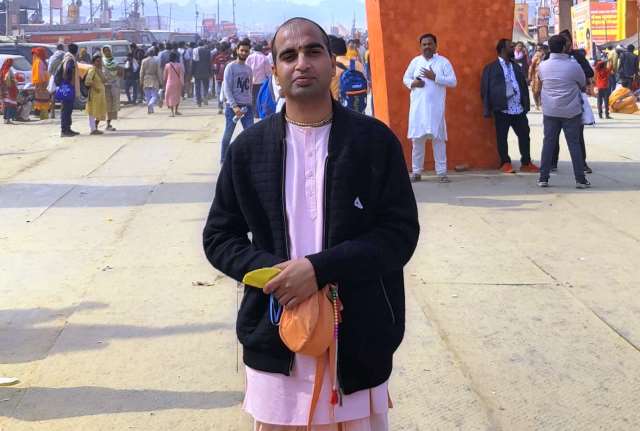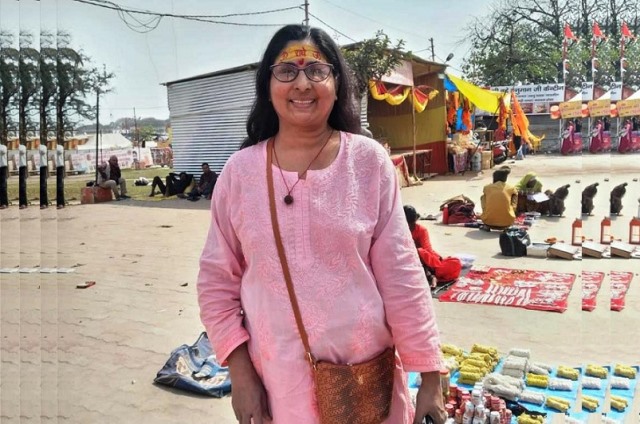Harinam Das, a spiritual preacher of the Bhagavad Gita, says it was heartening to see the unwavering faith and deep cultural roots that Maha Kumbh represents.
Maha Kumbh Mela is not just a festival; it is a spiritual phenomenon that brings millions together in the quest for divine blessings and purification. My recent experience at the religious congregation was nothing short of extraordinary. I had the privilege of leading around 80 devotees on this sacred pilgrimage, and each of us was deeply moved by the sheer scale, devotion, and meticulous organization of this grand event.
One of the most striking aspects of this Kumbh event was the outstanding arrangements made by the government. It is unimaginable how such a vast area was divided into well-planned sectors, ensuring that every akhara, organization, and pilgrim had designated spaces. The efforts put in by the administration, police, and volunteers were truly commendable.
Essential services such as water and electricity were supplied seamlessly to every camp, with on-demand services available when needed. This level of infrastructure management in a temporary city that hosts millions is nothing short of a miracle. The roads leading to the Sangam were well-constructed, and the temporary bridges built over the Ganga and Yamuna facilitated smooth movement, allowing devotees to reach their destination with ease.
It was a testament to Vedic culture and faith. What touched my heart the most was the unwavering faith and deep cultural roots that Kumbh Mela represents. It was incredible to witness lakhs of sadhus taking a holy dip at Triveni Sangam, purifying not just themselves but also uplifting the sanctity of the sacred waters. It is often said that the general public leaves their sins in the Triveni Sangam, and the pure-hearted sadhus absorb these impurities, cleansing the river through their devotion. Witnessing this profound act of selfless service was truly awe-inspiring.
The unwavering dedication of devotees who take time off from their daily lives to participate in this spiritual gathering reaffirms the deep trust people have in our Vedic Sanskriti. It was a heart-warming sight to see people from all walks of life, from across India and beyond, coming together for this divine occasion.
ALSO READ: ‘A Spiritual Experience And A Reminder For Better River Management’
Of course, there is always a scope for improvement. While the arrangements were outstanding, there are always opportunities for improvement. One key lesson could be drawn from the Jagannath Puri Rath Yatra, where crowd management and security protocols are meticulously executed. Increasing the presence of police and other uniform forces and more helping booths at key junctions would further enhance the safety and convenience of pilgrims.
Additionally, there should be an official social media and YouTube channel managed by the government. This would ensure the spread of authentic news related to the Kumbh Mela, preventing misinformation and unnecessary panic. With millions relying on digital platforms for updates, having a reliable source for official announcements would help pilgrims plan their visit smoothly.
Over all, it was a once-in-a-lifetime experience. Maha Kumbh is an experience like no other. The spiritual energy, the devotion, and the divine atmosphere make it a truly transformative journey. If you are hesitant about visiting due to concerns about the crowd, you may consider coming after February 15, when the rush settles.
I am grateful for the opportunity to have been a part of this grand spiritual congregation. Kumbh Mela is not just an event—it is a living testament to Sanatana Dharma, reminding us of our timeless spiritual heritage and the unity it fosters among devotees worldwide.
Jai Ganga Maiya! Har Har Mahadev!
(The narrator, popularly called Harinam Prabhuji, has been preaching the Bhagavad Gita for over 12 years. A B.Tech graduate, he blends modern education with the teachings of Lord Krishna)
As told to Deepa Gupta


